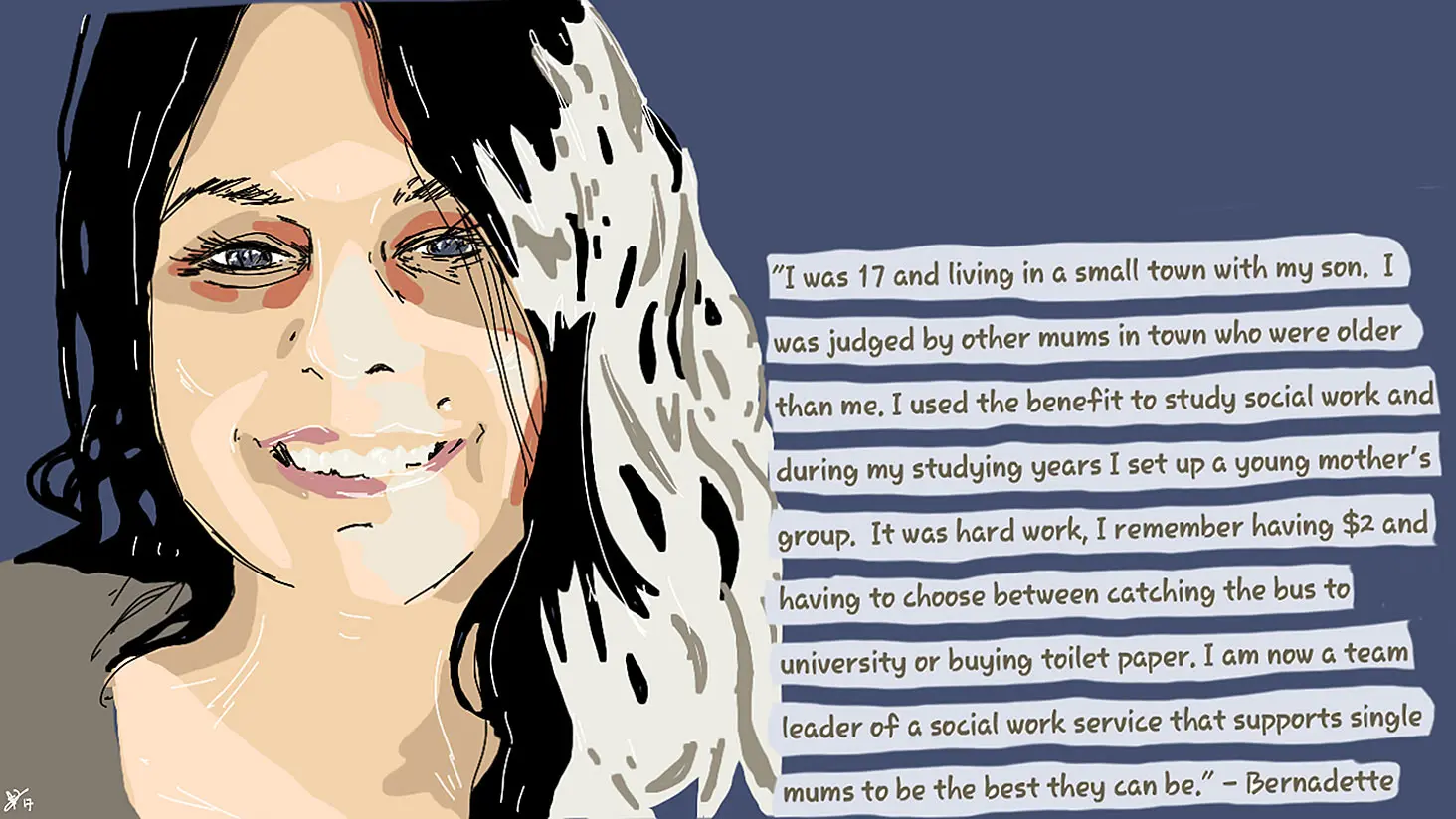Read a story about the We Are Beneficiaries art project
The We Are Beneficiaries archive of digital artwork and online posts demonstrates how social media can raise awareness of issues of concern in the community and help work towards change. The fully digital collection records a project that amplifies the voices of social welfare beneficiaries, who often struggle to have their experiences recognised or understood by those with greater privilege in their lives.
The project was initiated by the Auckland-based cartoonist and artist Sam Orchard in response to Metiria Turei’s resignation as Green Party co-leader ahead of the 2017 general election. Turei had given a speech in which she had spoken candidly about the difficulty of being a single mother living on social welfare payments in the 1990s while she was studying for a law degree. Following her speech, the hashtag #IamMetiria began trending on Twitter as New Zealanders expressed support and shared their own experiences. However, there was also a strong backlash in the media, and three weeks later Turei resigned her Green Party position, citing ‘unbearable’ scrutiny on her family.
In the wake of Turei’s resignation, Orchard mobilised a group of artists to create art to share their own experiences as beneficiaries, hoping to continue the conversation that Turei had started. The artists depicted themselves along with a few sentences about their experiences and posted them online. This developed into the We Are Beneficiaries project, which shared these visual stories via Facebook, Instagram and Twitter. Soon after, the artists invited members of the public to share their stories, to send in a picture of themselves if they wished, and to write three to five sentences about their time in the welfare system, how they’d been treated and what they wished the welfare system was like.
Various themes emerged from these real-life stories: inadequate benefits, dehumanising policies, public stigma, and bias against Māori, people of colour, single mothers and disabled people in particular. However, there were also stories of positive interactions with the system, and ideas and aspirations for changes the beneficiaries would like to see.
The collection of more than 250 stories published from August 2017 to August 2019 captures a significant development in contemporary artistic practice and an important moment in social and political history. Digital tools and social media are changing the ways in which art and stories are created, shared and understood as people explore the power of art and the internet to bring about beneficial change in society.
Story written by: Valerie Love
Copyright: Turnbull Endowment Trust
‘Anon.’ by Fu Fighter Arts

